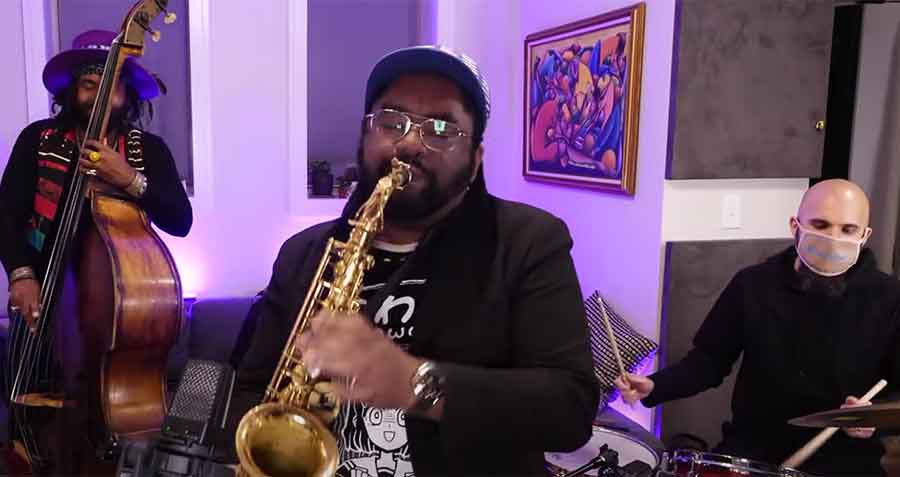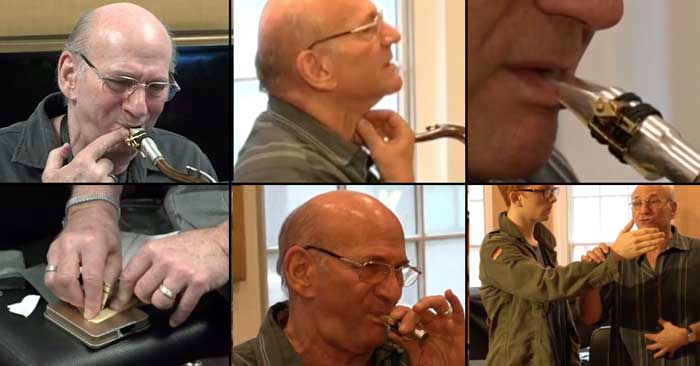Using Rhythmic Body Movement and Making Time Feel Priority Number One

“It Don’t Mean a Thing….”
Although I’m clearly not looking to score points for originality with the above reference, the truth remains that Duke Ellington summed it best with the title of his timeless standard and staple of popular American culture, “It Don’t Mean a Thing (If It Ain’t Got That Swing)”.
In other words, point me to a single legendary modern musical figure who didn’t play “deep in the pocket” with an impeccably intentional approach to time feel – I’ll wait….
If we’re talking about jazz, whether the legends of this music tended towards playing behind the beat (Dexter Gordon), right on the beat (Michael Brecker), ahead of the beat (mostly rhythm section players such as Charles Mingus as just one example), or moving between all of the above (just about every great musician), time feel is a central ingredient in musical greatness.
A Glaring Blind Spot
Maybe it’s because individual time feel wasn’t adequately emphasized over the course of my formative years of saxophone and jazz training. Or, more likely, it was because I was too busy focusing on the “what” aspect of my playing as opposed to the “how”.
But for whatever reason, it’s only been over the past few months of my 35 years on the instrument that I’ve become highly conscious of truly locking in with the rhythm section (or metronome, for that matter) while playing.
Listen With Your Eyes
What woke me up to the importance of laying deep into the groove was watching extraordinary pianist and walking encyclopedia of jazz, Emmet Cohen’s weekly (now monthly) jazz performance webcast, Live from Emmet’s Place. One of the striking hallmarks for me with each episode was watching Emmet bopping his head so swingingly (is “swingingly” even a word?) in rhythm.
In the video below, not only can you see what I’m talking about with Emmet, but also very clearly in the decreasingly-unsung walking embodiment of the entire history of jazz alto saxophone, Patrick Bartley. Check out how Patrick’s rock-solid time feel comes through visually as well as aurally.
Another example, albeit a bit more subtle, came to me while watching old performance videos of Cannonball Adderley. I couldn’t help but notice how Cannonball’s signature eyebrow-scrunching swing feel was punctuated by subtle movements of his head and shoulders.
Dancing to the Beat of Your Own Drum (or Not)
Bopping and swaying in rhythm with your instrument is by no means a requirement to playing with amazing time feel. Look up any video of Charlie Parker or John Coltrane and you’ll notice that the minimal body movement they’re displaying usually seems to be based on melodic phrases (or channeling tidal waves of energy from the gods of music) as opposed to a repetitive motions in tempo.
In the video below, you can see Bird alternating between very subtle movements in time with the rhythm section and swaying up and down in a way that corresponds to his melodic ideas.
6 Reasons to Incorporate Rhythmic Body Movement into Your Playing
Moving your body in rhythm while playing an instrument can definitely have some notable benefits, both physical and mental.
To list a few, rhythmic body movement while playing…
- Is likely to improve your time feel, making everything you play sound about 100% better: First and foremost, assuming that body movement indeed helps you play with improved time. That means that even if you’re a beginning musician and what’s coming out of your instrument is not exactly ripped from the pages of a Chris Potter solo, as long as you’re sitting snugly inside the pocket, your playing is going to have much more of a “professional” edge to it, which will put your listeners at ease and make them more receptive to the other aspects of your playing.
- Improves coordination: Playing an instrument requires coordination between your hands, eyes, and ears. Moving your body in rhythm can help improve your overall coordination, which will assist you in executing whatever it is you’re trying to play.
- Enhances musicality: Moving your body in rhythm can help you better feel, and thus, understand the music. This will help you enhance your musical choices and authentic expressiveness.
- Reduces stress: Playing an instrument can be stressful, especially when you are learning new material or performing in front of others. Moving your body in rhythm can help reduce stress and anxiety while promoting a sense of relaxation and well-being that will enhance every aspect of your playing.
- Increases energy: Moving your body in rhythm while playing an instrument can help increase your energy levels, making it easier to stay focused and engaged while practicing or performing. This allows for a more intense and emotionally engaging experience for your audience, regardless of whatever it is you’re playing, be it uptempo straight ahead jazz, a slow and quiet ballad, loud funk, or any other type of music.
- Enhances creativity: The added energy generated by moving your body in rhythm can help stimulate your sense of musical inventiveness, enabling you to explore new and inspired creative avenues.
Putting it into Practice
Unless you’ve never clapped your hands, snapped your fingers, tapped your toes, or cut a rug at your cousin’s wedding or at home in front of the mirror or anywhere else for that matter – there’s not a whole lot that needs to be explained here. But there are a few general concepts and action steps I’d like to share that have helped me significantly in the realm of using the body as a catalyst for significantly upgrading my time feel.
Trying Out Different Moves
The size and frequency of your movements will depend largely on the level of difficulty of whatever it is you’re playing.
The following are some example of movements you can try out – ideally starting with things like scales and arpeggios in comfortable keys, a simple melody, or a solo that’s sparse on the notes over an easy chord progression:
- tapping your toe
- bouncing up and down with upper torso
- subtly moving your head in time
- any potential choreographed moves you can imagine (or remember!) yourself making as part of a horn section
This is just a quick list of ideas to get the ball rolling (or bouncing, as it were), so try out a few different ways of moving to see what feels most natural.
It’s Hip to Be Square
While it’s true that there’s nothing less hip than clapping on 1 and 3, when it comes to getting physically locked into the tempo, if moving on beats 1 and 3 keeps you locked in, then by all means, go for it. In fact, I’ve seen the aforementioned “sensei of swing feel”, Patrick Bartley rock his upper torso up and down on 1 and 3, all the while groovin’ like nobody’s business. So don’t worry ab0ut the rhythmic “hipness” of your movements. You’re not auditioning to one of Beyonce’s backup dancers. It’s the music you’re making that’s the real “dancer” here.
Prioritizing the Beat
As mentioned in the first item in the above list of benefits above, playing with solid rhythm is an instant way to sound much better, since it doesn’t necessarily involve those advanced skills that take years to develop such as technique, ear training, and advanced and original melodic and harmonic vocabulary.
So if you’re like I was, and had never really thought about using your body as a source of swing and groove, with your next practice session, I invite you to set aside, at least temporarily, any attention on the melodic or harmonic content of whatever it is you’re playing. Instead, turn your focus towards your body movements and their relationship to the beat, and see what happens next. My guess is that you’ll be pleasantly surprised at the results.
Even if you ultimately find that moving in rhythm to the music doesn’t feel natural or diverts too much attention from the task at hand, the act of using the body as discussed in this article may very well get you moving towards a new level of rhythmic proficiency that will improve every area of your playing, making you that much more compelling to your listeners, and lighting the rhythm section on fire.





